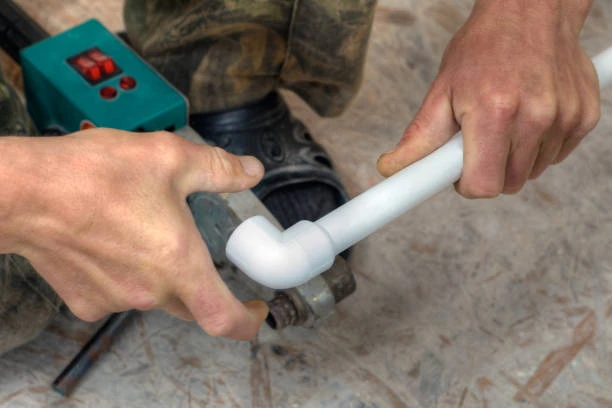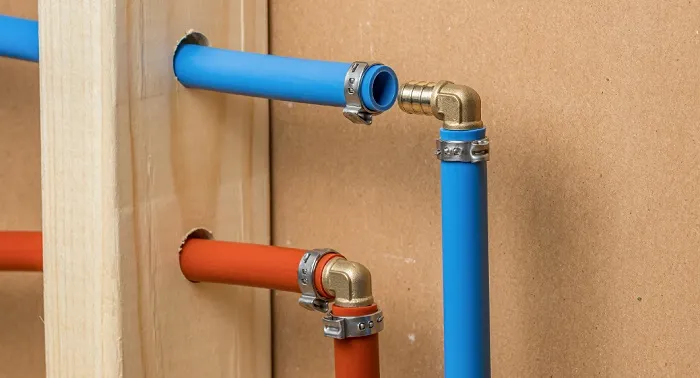1. Introduction to PPR Pipes and Fittings
PPR pipes and fittings have become a staple in modern plumbing and construction due to their durability, versatility, and eco-friendliness. When these products carry a Green Mark Certification, it signifies that they meet specific environmental and safety standards, making them even more appealing for both residential and commercial applications.
2. Understanding Green Mark Certification
2.1 What is Green Mark Certification?
Green Mark Certification is an initiative that identifies products that are environmentally friendly and safe for human health. It evaluates materials based on their life cycle, energy efficiency, and sustainability.
2.2 Importance in the Industry
This certification helps consumers make informed decisions and encourages manufacturers to prioritize eco-friendly practices. Products that are certified contribute to sustainability goals, reducing environmental impact.
3. Benefits of PPR Pipes and Fittings with Green Mark Certification
3.1 Eco-Friendly Materials
PPR pipes are made from recyclable materials that do not leach harmful chemicals into water supplies, making them a safer option for plumbing.
3.2 Energy Efficiency
These pipes have low thermal conductivity, meaning they maintain water temperature effectively, which reduces energy costs in heating applications.
3.3 Long-Term Durability
With a lifespan often exceeding 50 years, PPR pipes reduce the need for frequent replacements, leading to less waste and lower overall environmental impact.
4. Key Features of PPR Pipes and Fittings
4.1 Corrosion Resistance
Unlike metal pipes, PPR pipes do not corrode, ensuring a longer service life and better water quality.
4.2 High Temperature and Pressure Resistance
PPR pipes can handle temperatures up to 95°C and pressures of 20 bar, making them suitable for a wide range of applications.
4.3 Versatility
These pipes and fittings can be used for hot and cold water systems, as well as in heating and cooling applications.
5. Applications of PPR Pipes and Fittings
5.1 Residential Use
In homes, PPR pipes are used for water supply lines, underfloor heating, and even drainage systems.
5.2 Commercial Applications
In commercial buildings, these pipes are utilized in HVAC systems, water distribution, and fire safety systems.
5.3 Industrial Settings
PPR pipes are commonly found in industries that require chemical processing and handling due to their resistance to various chemicals.
6. Installation of PPR Pipes and Fittings
6.1 Preparation
Before installation, ensure that all necessary tools are available and that the work area is clear.
6.2 Cutting and Joining
Follow standard practices for cutting and joining PPR pipes, utilizing the heat fusion method to create strong, leak-proof connections.
6.3 Final Checks
After installation, perform pressure tests to ensure all joints are secure and functioning correctly.

7. Maintenance of PPR Pipes and Fittings
7.1 Regular Inspections
Conduct periodic checks for any signs of wear or damage, particularly at joints and fittings.
7.2 Cleaning Procedures
Use non-corrosive cleaning agents to maintain the integrity of the pipes and ensure water quality.
8. Selecting Quality PPR Pipes and Fittings
8.1 Research Manufacturers
When choosing PPR pipes and fittings, opt for reputable manufacturers that provide Green Mark Certification.
8.2 Checking Specifications
Always verify that the pipes meet the necessary standards for your specific application to ensure safety and efficiency.
9. The Future of PPR Pipes with Green Mark Certification
As awareness of environmental issues continues to grow, the demand for PPR pipes and fittings with Green Mark Certification is expected to rise. This trend will encourage innovation in sustainable plumbing solutions.
10. Conclusion
PPR pipes and fittings with Green Mark Certification represent a responsible choice for those seeking durable, efficient, and eco-friendly plumbing solutions. By understanding their benefits and applications, consumers can make informed decisions that support both their projects and environmental sustainability.
Environmental Benefits
This reduces the environmental footprint of the product, from raw material extraction to final disposal. Additionally, the use of recycled materials in their manufacture further minimizes waste and promotes sustainability.
Cost-Effectiveness
The durability and ease of installation of PPR pipes and fittings contribute to their overall cost-effectiveness. With minimal maintenance requirements and a long lifespan, they offer a significant return on investment. The Green Mark Certification adds an additional layer of value, making them a smart choice for environmentally conscious consumers.
Applications of PPR Pipes and Fittings
Here are some of the most common:
Residential Plumbing
PPR pipes are ideal for residential plumbing systems, including water supply lines, heating systems, and underfloor heating. Their durability and ease of installation make them a preferred choice for homeowners.
Agricultural Irrigation
Their flexibility and durability make them well-suited for this application, ensuring reliable water delivery even in harsh conditions.
Environmental Benefits
This reduces the environmental footprint of the product, from raw material extraction to final disposal. Additionally, the use of recycled materials in their manufacture further minimizes waste and promotes sustainability.
11. FAQs
11.1 What does Green Mark Certification ensure?
It ensures that products meet specific environmental and health safety standards.
11.2 How long do PPR pipes last?
PPR pipes can last over 50 years with proper installation and maintenance.
11.3 Are PPR pipes safe for drinking water?
Yes, they are safe and do not leach harmful chemicals into the water.
11.4 Can I use PPR pipes for both hot and cold water?
Absolutely! PPR pipes are suitable for both hot and cold water systems.
11.5 Where can I buy certified PPR pipes and fittings?
You can find them at specialized plumbing supply stores or through reputable online retailers that offer Green Mark Certified products.


















